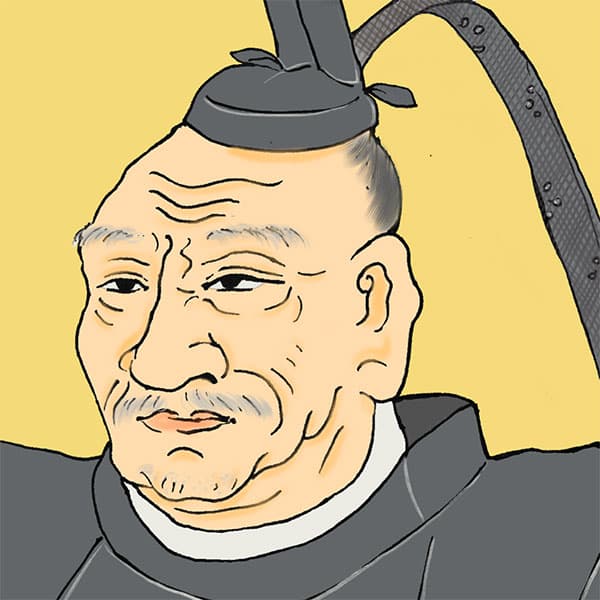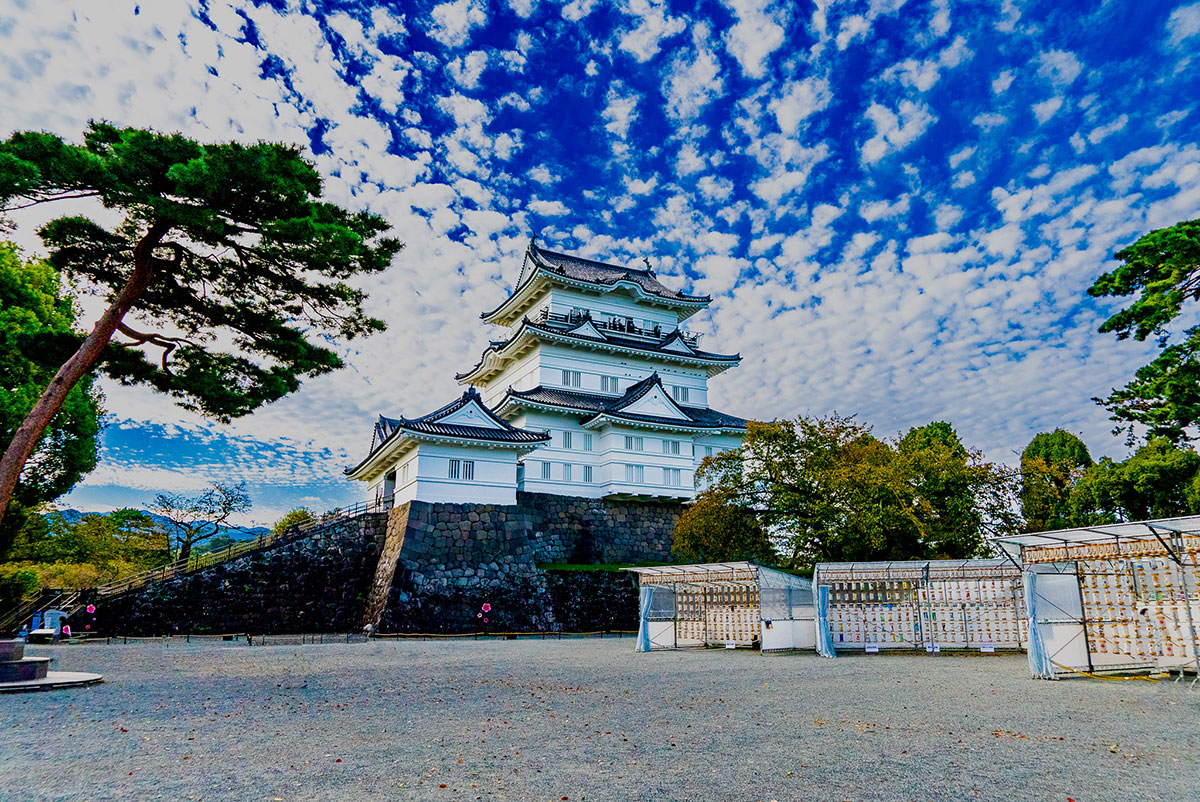- Imabari DomainLaid the foundation for Imabari towel production
- The Imabari domain was a domain that ruled the entire Imabari City area of Ehime Prefecture, with Imabari Castle as the domain office. Imabari is famous for its ``Imabari Towel'', but cotton cultivation has been popular in Imabari since the Edo period. Matsudaira Hisamatsu, who ruled the Imabari domain, encouraged cotton cultivation as an industry for the domain.

Imabari CastleImabari City, Ehime Prefecture
- spring
- summer
- autumn
- winter
- TOP
- Shikoku
- Ehime Prefecture
- Imabari Castle
| Other name | Fukiage Castle, Fukiage Castle |
|---|---|
| castle construction | 1602 |
| address | 3-1-3 Dorimachi, Imabari City, Ehime Prefecture |
| telephone number | 0898-31-9233 |
| Opening hours | 9am to 5pm |
| closing day | December 29th to 31st only |
| Admission fee | Adults 520 yen / Students 260 yen |
Imabari Castle is a large-scale flat castle built on the coast facing the Seto Inland Sea.
- Access to Imabari Castle
- From Imabari Station on the JR Yosan Line, take the Setouchi Bus bound for Imabari Sales Office for about 10 minutes, get off at Imabarijo-mae, and walk for about 3 minutes.
HISTORYImabari Castle, one of Japan's three major water castles
Imabari Castle is a sea castle built in Imabari City, Ehime Prefecture. It was built by master castle builder Todo Takatora, and is considered one of Japan's three major water (sea) castles, along with Takamatsu Castle in Kagawa Prefecture and Nakatsu Castle in Oita Prefecture. Let's unravel the history of Imabari Castle.
- Kaijo built by Takatora Todo
- Imabari Castle was built by Todo Takatora in 1602. Todo Takatora was a man who rose from 300 koku to a feudal lord after changing masters many times, and was able to serve Toyotomi Hideyoshi's younger brother, Toyotomi Hidenaga, and his nephew, Toyotomi Hideyasu. After the death of Toyotomi Hideyoshi, he approached Tokugawa Ieyasu and sided with the eastern army at the Battle of Sekigahara in 1600. At this time, Takatora Todo was given 80,000 koku in Uwajima, but after the Battle of Sekigahara he was given 120,000 koku in Imabari as a reward. Until now, the base of Imabari control was Kokufu Castle on the summit of Mt. Karakoyama, but Todo Takatora was responsible for monitoring the Kurushima Strait, which is a key transportation point in the Seto Inland Sea, and for building a functional city on the coast of Imabari. decided to build a castle. Ryo Watanabe was appointed as the construction magistrate, and Imabari Castle was completed in 1604, which took two years. At the time of its construction, Imabari Castle had a structure that took in seawater to create a triple moat, stone walls stacked high, and turrets and other features. The inner moat and 13m-high stone wall still remain as they were back then. Records show that at the time, the structure was such that ships could enter the moat directly from the sea. With an almost square design, the residences of samurai close to the samurai were built within the Ninomaru, feudal lord's mansion, and Nakabori. Furthermore, samurai residences were built within the outer moat, and the castle was vast with nine gates and 20 turrets. In addition, the castle tower was built with a tiered tower, rather than the watchtower style with gables and gables that were popular at the time. Furthermore, Edo Castle, which was later constructed by Takatora Todo, also had a layered tower-type castle tower, which shows that the mainstream shape of castle towers changed significantly during this period. By bringing in seawater, the moat of Imabari Castle became home to saltwater fish such as flounder, rockfish, and perch. On the other hand, there are places within the moat where fresh water gushes out, and freshwater fish live there. The environment of the moat, which gave rise to an ecosystem unlike any other in Japan, remains unchanged to this day. In 1609, Todo Takatora was transferred to Tsu Castle in Ise Province. Accordingly, the castle tower of Imabari Castle was dismantled and relocated to Kameyama Castle in Kameyama City, Kyoto Prefecture. Even after the transfer, Imabari 20,000 koku was adopted by Takatora Todo and continued to be ruled by Takayoshi Todo, the third son of Nagahide Niwa. In 1635, when Takayoshi Todo was transferred to the Nabari domain in Iga Province, the Matsudaira Hisamatsu clan was transferred from Nagashima, Ise Province to Imabari, and from then on until the Meiji Restoration, the Hisamatsu Matsudaira family ruled the Imabari domain.
- Imabari Castle after the Meiji era
- In the Meiji period, most of Imabari Castle's buildings were destroyed before the castle abolition order was issued. The few buildings that remained, including the armored tower, were destroyed in a fire in 1871 when gunpowder stored inside the castle ignited and exploded into flames. However, the inner moat that drew in seawater and the stone wall on which the main keep was built still exist, giving us a reminder of what it looked like back then. In 1980, the five-story, six-story castle tower was restored using reinforced concrete, and in 1985, the east corner turret was restored. In 1990, the wooden Yamazato Yagura Yagura was restored in the west corner of Ninomaru, and in 2006 it was designated as one of Japan's 100 Famous Castles. In 2007, the stone walls, five Tamon turrets, and Tetsumikado Arms Tower were restored to wooden structures based on materials from the Edo period, and the elephant statue of Todo Takatora, who built the castle, was also erected.
- Current Imabari Castle
- The restored castle tower of Imabari Castle is currently used as a museum that tells the history of the Imabari clan. The moat preserves a mysterious environment where saltwater and freshwater fish coexist, and is one of the highlights. At night, the area is lit up with approximately 100 ceremonial lights from 30 minutes after sunset until 10pm, making it a popular tourist spot. Every May, a lion dance is held at Fukiage Shrine in Imabari Castle, making it a festival that attracts not only tourists but also locals.
- Imabari Castle summary
- Imabari Castle was built by Todo Takatora, a master castle builder, and the inner moat and stone walls that were filled with seawater still exist today. The restored castle tower is made of reinforced concrete, but the iron gate has been restored to be made of wood. This is a fun historical site for history buffs as well as those interested in natural science to visit and see.
Read biographies related to Imabari Castle
- Takatora TodoA master of castle construction who served many lords.
- Todo Takatora was born in 1556 in Todo Village, Inukami Gun, Omi Province (Shiga Prefecture) as the second son of Todo Takatora. His childhood name is Yokichi. His father, Torataka, was born as the second son of Noritsuna Mitsui, the lord of Omi Nazue Castle, but when he was young,

History of the Imabari Domain, whose domain office is Imabari Castle
| Domain office | Imabari Castle |
|---|---|
| old area | Iyo country |
| stone height | 35,000 koku |
| Fudai/Tozama | Fudai |
| main lord | Todo family, Matsudaira family |
| Estimated population | 75,000 people (first year of the Meiji era) |
















